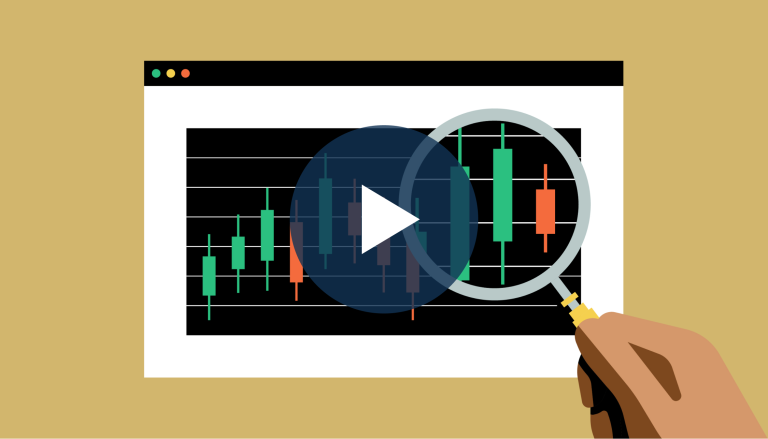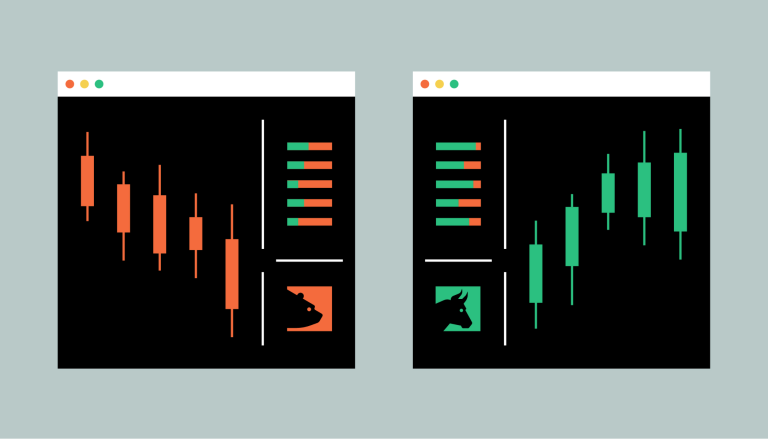From avoiding FOMO to having a plan, 4 key ways to manage a crypto down cycle
Strategies to stay calm during a crypto market downturn

Since its inception in 2009, the Bitcoin and cryptocurrency markets have seen many cycles of growth and decline, even within the larger ongoing trends known as bull and bear markets. While it’s true that each market dip has so far been followed by a recovery and significant growth, periods of decline can be stressful and hard to navigate for experienced traders and beginning investors alike.
Here, we discuss five strategies that you might want to follow during a market dip in order to hold on to the value in your portfolio, avoid emotional trading, and lose less sleep.
#1 - Don’t fall prey to FOMO and FUD
Staying on top of the latest news and trends in the cryptocurrency space is crucial, but too much information can definitely be a bad thing. This is especially true in market downturns, where it’s all too easy to be overcome by your instincts and make some badly timed trades.
FOMO (fear of missing out) and FUD (fear, uncertainty, and doubt) are common terms in the crypto space, and can have a stronger influence on our choices to buy and sell than many of us would like to admit.
FUD generally refers to a negative market sentiment, caused by some rumor, unfavorable news article, or prominent figure expressing concerns about a particular market or asset. This can have a negative effect on the price as traders sell their holdings expecting further price decreases. FOMO is the opposite, speaking to a trader’s tendency to get carried away with wishful thinking after seeing positive price action or news, sometimes overlooking fundamental signals in a haste to jump aboard the next rocket ship to the moon.
Remember: No one can predict the future, and no single person’s advice is better than doing your own research and coming to your own conclusions. In some cases, influencers and publishers can actually have a vested interest in causing FUD or FOMO in order to manipulate the markets in a given direction. When learning about the latest updates across cryptocurrency markets, always try and confirm with multiple sources.
#2 - Set clear goals, diversify, and only trade within your means
No matter how confident you are in a particular asset, you should never invest more than you can afford to lose. The last thing anyone wants is to be caught in an emotional rollercoaster waiting for positive price action as the price of their portfolio slowly drops.
Most savvy investors also choose to hold a number of different kinds of assets long-term to diversify their portfolio — from alternate cryptocurrencies to stock market index funds.
It’s often said that crypto doesn’t sleep. Cryptocurrency markets are well known for their volatility and to counter this, crypto investors should predefine their trading strategies, and if possible, their entry and exit points.
Even if you had access to every bit of information available, a sudden black swan event, hack, or tweet from a high-profile individual could cause prices to plummet. This is why it’s crucial to plan ahead and to take steps to mitigate your losses should some kind of sudden crash occur.
Investors could consider fixed strategies like dollar-cost averaging (the process of buying or selling small amounts over regular intervals). This approach can help a crypto buyer avoid trading with their emotions and reduce the need to monitor charts constantly. However, it's important to note that while dollar-cost averaging can mitigate the risk of making poorly timed trades, it does not guarantee profits or protect against overall market declines. Additionally, this strategy may lead to higher transaction costs due to frequent trading and might result in underperformance compared to a lump-sum investment during a strong market uptrend.
Remember: It’s very easy to get carried away while holding volatile assets like cryptocurrencies. Trading can be a very high-risk activity, and especially in a bear market, and investors should aim to set goals that balance minimizing potential losses with achieving potential gains.
#3 - Be ready to ride out the dip or take profits
An option during crypto volatility is to convert some of your volatile crypto holdings for more stable assets.
Stablecoins like USDC aim to maintain their value at a fixed price — and by converting part of your portfolio into stable-value assets, you potentially lower your exposure to price changes while the markets are in a lull.
But also remember that selling everything at once, called capitulation, can easily cause crypto holders to lose out if the market suddenly rebounds. This is why it is so important to map out an idea of what level of profit and loss you would be comfortable with before you’re forced to make decisions under pressure.
Remember: Many investors today choose to move in and out of more stable assets as part of a larger withdrawal and buy-back strategy, which can help gradually grow their portfolios if the timing is right. This isn’t easy though, and even the most experienced investors often fail to time their entries and exits correctly. Additionally, even with more stable assets, you may be able to lose all the money you invest. (Again, for many investors, dollar-cost averaging can be a good way to avoid even attempting to time the market.)
#4 - See the opportunities
Even when the crypto markets are falling, there are opportunities if you know where to look. Where others see a dark and cold crypto winter, keen investors see a new window of opportunity to get their favorite assets at a discount and potentially turn a profit.
“Buying the dip” is a popular way for traders who felt priced out of previous gains to get into the market or increase their positions.
Even within a downtrend, there will still be small peaks and valleys as the market fluctuates. Traders that have brushed up on their technical analysis skills can stand to benefit here, using that knowledge to predict these short-term movements and capitalize on them by buying the short-term lows and selling the highs.
Short selling, or betting that an asset’s value will fall, is also a strategy to potentially turn a profit during dips.
Activities like staking and DeFi yield farming can further help level out returns and provide support to make sure your actual crypto balance is always growing, even in a bear market or downtrend.
If you believe an asset will eventually be worth more, dollar-cost averaging works whether markets are up or down! In fact, you get more crypto for your dollar during down cycles.
Remember: These kinds of activities (with the likely exception of DCA) are not for the faint of heart, and may actually result in significant losses — or at the very least greatly increase the amount of time you spend in front of a screen watching stressful price charts.


